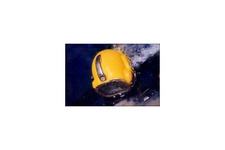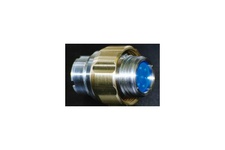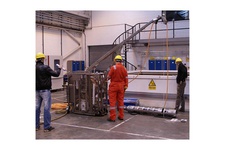| English | 선택 | |
| 한국어 | 선택 | |
| Русский | 선택 |

Tethered Aerostats are unmanned non rigid lighter than air cehicles sometimes referred to as 'blimps'. These Aerostats remain anchored to the ground by a thether cable. The tether cable can also act as the main tensile rope, this involves the use of aramid fibres which act as the strength member enabling the cable to withstand snatch loads of several tonnes.
The tethered aerostat (TA) consists of the envelope with the ballow, the payload suspended by rope and rigging. The payload would include navigational equipment, control and emergency power and lightning discharge protector. Working altitudes can vary from 1000-5000 meters with payout speeds of up to 180 meters per minute.
The cable construction uses Fibre Optics (Fiber Optics) and conductor cores and coaxials, these elements are wrapped in aramid bibres like kevlar (tm) or Twaron that acts as the strength member normally rated 4-5 times the safety margin with limited elongation of less than 3%. The entire package is extruded with a waterproof protective material such as polyurethane. The cable diameters are between 12-19mm diameter.
The strength element aramid fibre is terminated in a lightweight eye thimble to a padeye and the conductor elements pig tailed out the dise of the tether to special waterproof connectors. All these components can be made in delrin peek or aluminium for reduced weight implications.
Objective design for Aerostat cables and important characteristics are material stiffness and strength to weight ratio (B/D ratio). The diameter of the tether has to be as small as possible to reduce or limit the aerodynamic drag.


















































































































